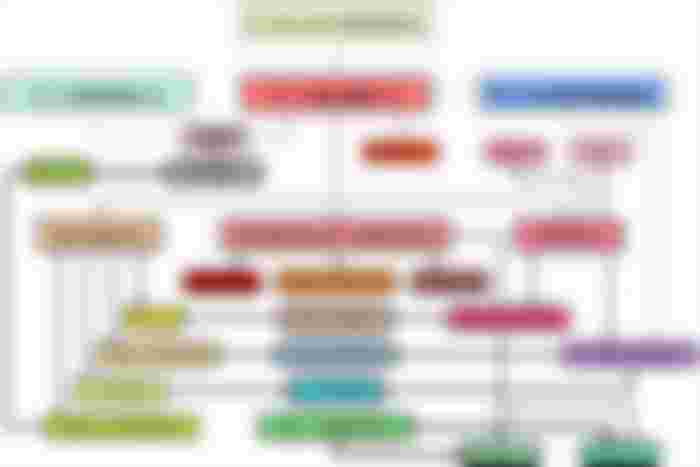What is “Coffee?”
Although when we talk about ‘coffee’ we typically are referring to the dried beans of species of plant first taxonomically identified in 1753 as Coffea arabica, the number of identified plants within the Coffea genus has since extends to over 120 in recent years; 66 of these species are native only to the island of Madagascar. While this genus constitutes a growing number of species, this is largely the result of efforts in recent decades to revive the ever-shrinking genetic pool on which future Coffea species must rely. Subject to the persistent forces of habitat destruction, disease, and climate change, the International Union for Conservation of Nature (IUCN) indicates that around 80% of all known species fall under endangerment classifications ranging from “Near Threatened” to “Critically Endangered.” To this effect, researchers and plant breeders alike are hard at work crossbreeding new coffees that aim to revitalize the shrinking Coffea gene pool. By interbreeding different Coffea species with one another, breeders hope to not only develop new commercially desirable varieties but to infer upon these varieties increased genetic diversity for future progeny.
Why is Genetic Diversity Important?
Genetic diversity is extremely important on every population level from the individual to the ecosystem as a whole. When discussing more than one individual, the term ‘genetic diversity’ typically refers to the variety and quantity of different inheritable gene types (haplotypes) that exist amongst members of a population or populations; populations with a greater variety of haplotypes are typically considered to demonstrate greater genetic diversity than those of a similarly sized population with lesser haplotypes. Low genetic diversity is considered to be an “evolutionary pressure” in that it threatens the survival of a species or other population by limiting the number of genetic tools the population has on hand to deal with unforeseen environmental stressors like the introduction of a novel pest or sustained droughts. When it comes to the Coffea genus in particular, the spread of pests and disease like Coffee Leaf Rust (CLR) and Coffee Berry Disease (CBR) as well as extensive tropical forest clearing to make way for high output monocropping operations over the previous 100 years have resulted in dramatic losses in genetic diversity that threaten the ultimate survival of Coffea arabica as well as the Coffea genus as whole.
Research & Breeding Projects
While coffee breeding projects have been around since the 1950s to combat the spread of diseases such as CLR, breeding coffee is a notoriously slow process. Given that the typical coffee variety takes 2-4 to mature and reach the fruit-bearing stage of its development, researchers are racing against the clock to come up with novel varieties that will be capable of withstanding the tests of climate change while still producing with sufficient yield to accommodate increasing global demand. Major global coffee research and breeding projects include World Coffee Research and the Centro Agronómico Tropical de Investigación y Enseñanza (CATIE) respectively. Furthermore, organizations such as the nonprofit Specialty Coffee Association focus on connecting and educating members of the coffee industry ranging from farmers to baristas in order to help facilitate the equitable and sustainable growth of the coffee industry as a whole.
Looking to the Future
Though the future of coffee may still be uncertain in the face of environmental pressures, low-genetic diversity, and increased demand, hope is not lost for coffee! Recent advances in genetic, molecular biology along with collaborative international funding for coffee breeding have come together in recent years to address the growing problem. As of 2017, the entire coffee genome was sequenced and released to the public by the University of California, Davis. Though the genome had first been sequenced in 2014, this sequencing gave researchers a far greater understanding of the how various coffee lineages have evolved over time. Speaking on the achievement, UC Davis geneticist and co-lead on the project Juan Medrano stated that the “genome sequence for Coffea arabica contains information crucial for developing high-quality, disease-resistant coffee varieties that can adapt to the climate changes that are expected to threaten global coffee production in the next 30 years.” Advances such as these coupled with other genetic technologies, like clustered regularly interspaced short palindromic repeats (CRISPR), afford scientist the precision to alter DNA code by the individual base pair in the search for novel, flavorful, and hardy future cultivars.
The aim of this collection is to highlight some of the most important and unique coffee varieties that have risen and fallen out of favor over the previous several hundred years of recorded human use. In order to explore how decades of natural and anthropogenic breeding has brought about the coffees of the world today, we will follow the spread of coffee out of Africa, through Yemen, to India, Southeast Asia, and ultimately to the Americas. The more we learn of how precious these natural wonders and how fragile the thread of their mere existence truly is, perhaps the more we can come to appreciate the power they hold over us. Shame on us if we do not; who would want to live without coffee anyway?
“When the well is dry, we know the worth of water.” – Benjamin Franklin

As always, feedback on this project as well as suggestions for future works are always appreciated. Thank you!
Publish0x reflink: https://www.publish0x.com?a=M7e58kDYd2
r.c affiliate link: https://read.cash/r/tych0_21
